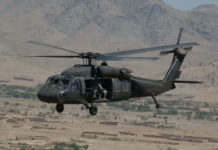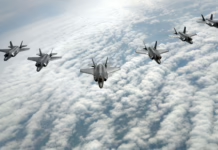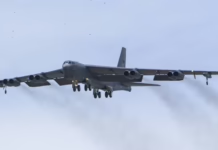The landmark decision directs the Federal Aviation Administration to lift restrictions that have blocked commercial supersonic aviation since 1973, potentially revolutionizing domestic air travel.
President Donald Trump signed an executive order repealing the decades-old ban on supersonic flights over the United States, marking a pivotal shift in aerospace policy that could usher in a new era of high-speed commercial travel.
The order directs the Federal Aviation Administration to end current restrictions on civil supersonic flights that have been in place since 1973, when the government implemented the ban due to concerns about noise pollution and supersonic booms. The decision follows legislative efforts including the Supersonic Aviation Modernization Act (S.1759/H.R.3410), introduced by Senator Ted Budd (R-NC) and Congressman Troy Nehls (R-TX).
Industry Welcomes Policy Reversal
The lifting of the 52-year prohibition has drawn immediate praise from aerospace companies developing next-generation supersonic aircraft. Blake Scholl, Founder and CEO of Boom Supersonic, responded to the announcement, stating: “Legalizing supersonic flight makes a renaissance in supersonic passenger travel inevitable. We’re grateful to President Trump for his leadership — this important step allows us to accelerate development of our Overture supersonic airliner.”
The policy change comes as the industry advances “boomless” technology through aircraft like Boom Supersonic’s XB-1 demonstrator, which aims to enable faster-than-sound flight without disruptive noise effects. Boom’s Overture airliner could potentially become the first new civil supersonic jet since the Concorde’s retirement.
Regulatory Framework and Timeline
The Federal Aviation Administration now faces the task of drafting new regulations to certify supersonic aircraft, with industry stakeholders pushing for comprehensive noise and emissions standards. The regulatory framework will need to balance economic feasibility, technological capabilities, and community requirements.
Airlines and manufacturers are expected to accelerate development programs for supersonic travel, with commercial service potentially entering operation as early as the 2030s. The decision positions the United States to compete with international supersonic programs, including China’s announced initiatives in the sector.
Economic and Strategic Implications
Supporters argue the regulatory change will boost the aerospace industry by creating jobs and manufacturing opportunities while providing economic and security benefits. American companies developing supersonic aircraft, many of which already have contracts with major U.S. carriers, celebrated the news as validation of their long-term development strategies.
The executive order will advance coordination of supersonic research, development, and testing while promoting international engagement between the FAA and other agencies to align global supersonic flight regulations. This coordination could facilitate international agreements and bilateral flight operations.
Background and Context
The 1973 ban effectively stifled major supersonic development in the United States for more than five decades. The prohibition covered overland supersonic flights, forcing any such operations to occur over water to avoid noise impacts on populated areas.
Trump’s action represents part of broader deregulation efforts aimed at spurring innovation and economic growth through the repeal of what the administration characterizes as outdated anti-competitive regulations. The move seeks to reestablish U.S. leadership in high-speed aviation technology.
While specific timelines for supersonic passenger service remain unclear, the industry can now advance rapidly toward making supersonic travel a commercial reality. The potential exists to cut travel times in half between major cities, fundamentally transforming domestic air transportation.

Key Takeaways
- President Trump signed an executive order ending the 52-year ban on supersonic flights over the United States, reversing restrictions in place since 1973.
- The Federal Aviation Administration must now develop new certification standards for supersonic aircraft, focusing on noise and emissions requirements.
- Industry leaders expect commercial supersonic service could begin in the 2030s, with companies like Boom Supersonic accelerating development programs.
- The policy change positions the U.S. to compete with international supersonic programs while potentially creating jobs and manufacturing opportunities.
- Airlines and aerospace manufacturers with existing supersonic aircraft contracts can now advance their development timelines.








